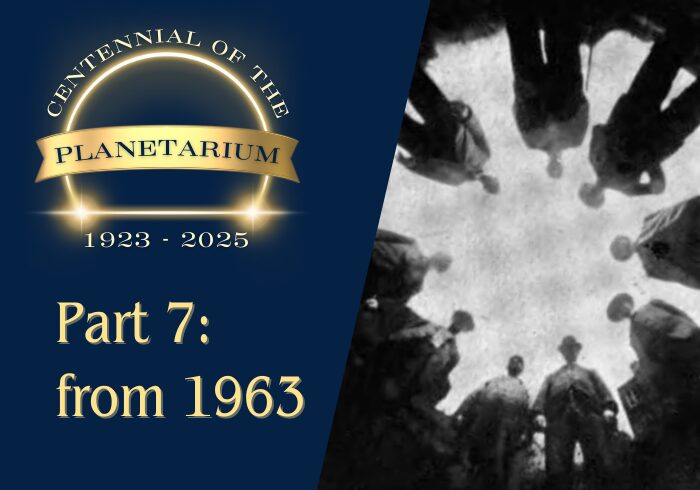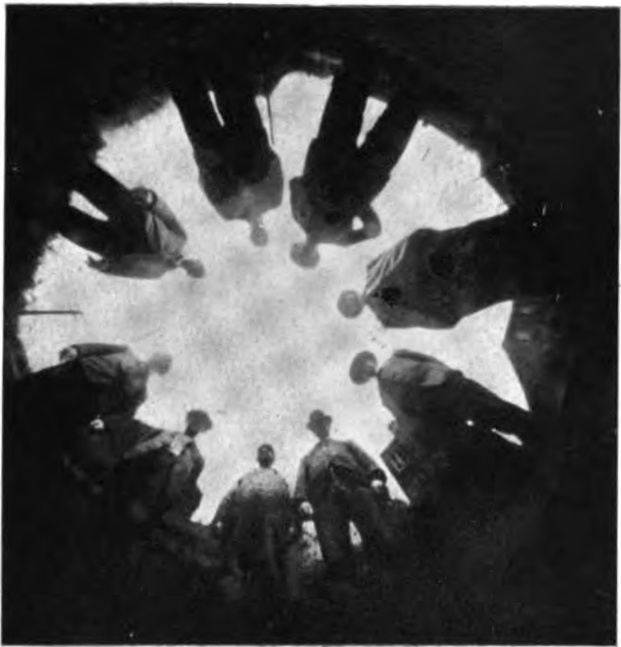SKYWARD TALES: PLANETARIUM’S STORY UNFOLDED – PART 7


Step into Chapter 7 of “Skyward Tales: Planetarium’s Story Unfolded – The Rise of Immersive Planetarium Technology (1960-1970)”, where each segment illuminates a distinct era in the development of planetariums,
From their conceptual inception to the state-of-the-art digital domes of the present, this series chronicles the remarkable journey of these celestial theaters. Discover how each generation of planetariums has expanded our horizons, bringing the mysteries of the universe closer to earth.
Through this exploration, we celebrate the technological marvels and the visionary minds that have transformed these spaces into portals to the cosmos. Embark with us on a voyage through the history and innovation of planetariums.
The introduction of fisheye lenses in planetariums around 1963 revolutionized the display capabilities, allowing for the projection of full-dome images, known as Allsky.
This technological advancement expanded the educational content beyond traditional astronomical subjects to include natural phenomena such as cloud formations, sunsets, and underwater scenes.


These Allsky images, providing immersive experiences, transformed planetariums into multi-disciplinary educational spaces where various aspects of natural sciences could be explored alongside astronomy. This period marked a significant evolution in planetarium technology, broadening their appeal and utility.
In the late 1960s, the Fleischmann Atmospherium-Planetarium at the University of Nevada, Reno, embarked on innovative experiments in 180° motion-picture photography and projection. Utilizing modified 35mm Mitchell cameras and a Strong carbon-arc projector, the planetarium produced several scientific films that illustrated a range of natural and astronomical phenomena. These films, projected onto a 30-ft dome, completely enveloped the audience, offering an unprecedented level of realism due to the frameless screen.
This pioneering approach significantly enhanced the educational presentation of sciences, making complex topics more accessible and engaging for both students and the general public. This step forward in planetarium technology not only broadened the scope of content that could be presented but also set a new standard for immersive educational experiences in planetariums.


The first commercial projectors for special effects in planetariums were indeed introduced by Sky-Skan in the late 1960s, marking a significant advancement in the way planetariums could create immersive experiences for their audiences. The company’s early contributions included a wide range of optical special effects that allowed for the projection of moving clouds, rotating black holes, and other dynamic visuals that were previously difficult to achieve with home-built or available projectors within the dome.
These projectors have evolved to include additional features such as twilight scenes, the Milky Way, constellations, and various natural and astronomical phenomena, providing a more dynamic and engaging experience for viewers.
These analog special effects projectors provided a new level of visual storytelling and educational content, making the planetarium experience more multidimensional and interactive. The introduction of such technology facilitated the portrayal of complex astronomical phenomena and natural events in a more lifelike and captivating manner. This innovation not only enhanced the viewer’s experience but also broadened the educational potential of planetariums by allowing for a more diverse range of topics to be covered, from detailed astronomical events to broader natural phenomena.
Skypoint Planetariums is proud to sponsor the centennial celebration of planetariums.
We invite everyone to visit the dedicated website created by GDP and IPS:
www.planetarium100.org
Stay tuned for our next cosmic journey in the “Skyward Tales: Planetarium’s Story Unfolded” series.
